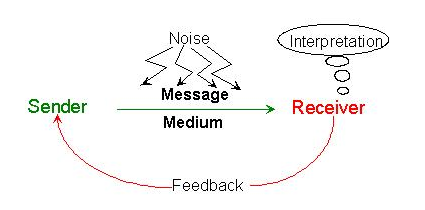We aim to respond to all messages within 1 business day. You'll be hearing from us soon!
In the meantime, perhaps you'd like to learn more...
5 Tips to Raise Your Communication Success Rates
Communication. It is the key to everyone’s business and their success. It impacts upon the ability to sell, serve, compete and succeed in business (and life). But how do we get it so wrong?
When we usually think of communication, we tend to lean towards the actual message. More often or not 90% of our focus is probably wrapped up in the message. But how often or not have we got communication wrong based on the how, when, where and who, rather than just the what.
Let's look at a quick example. You might receive an email message that lacks a hello, the use of a please or thank you and a good-bye - I'm sure you could scour your inbox and find something quite similar!
Something like:
"Alfredo - I need the statistics for the monthly report asap."
In essence a lack of niceties, a lack of personal connection and a lack of tact. The business environment has become a juxtaposition of speed and efficiency but at the expense of ‘personal’ contact. As employees we are often so focused on the end goal and getting what we need now, we fail to place the required value on the connection with the communication recipient.
It’s a shortsighted paradox – as often or not, our failure to provide the desired hello, please and thank you is received negatively, meaning the receiver takes issue and actually impedes what we were looking for in the first place – action, speed and efficiency. While the message originator believes they are being assertive, the message and tone received, is one of aggression.
“Assertiveness is not the same as aggression. When you're aggressive, you push to get your own way without thinking about other people's rights, wants, and needs.” MindTools.com
“Assertive people have acquired the skills to state their opinions to others in a respectful manner while those who are aggressive attack others and force their opinions on others.” (Kleinschmidt, 2013)
Subsequently, the lack of a formal hello or asking for something in a manner that is deemed appropriate means that the result can be less than desirable as tensions manifest and personalities are bought into the fray.
Communication Theory
I pass my mind back to a communications paper I did at university; communication theory - something along the lines of two people, communication one way, and noise surrounding the interaction which impacts on the ‘quality’ of the communication.

It’s an extremely simplistic but effective way to look at communication after being in the workforce for almost twenty years. Though you can appreciate the Shannon-Weaver Communication Theory (also referred to as the Sender-Message-Channel-Receiver model or SMCR model for short), it is now with a little retrospect that communication and its interpretation is actually closely linked to the sender and their abilities to communicate. (And yes I did have to go look this model up!)
Expanding on SMCR, the message is limited to the actual content and the noise refers to anything that interferes with the clear transmission of the message. I guess in a way, the noise could be categorised as a person’s manner (or lack of), but I feel that it is something that should be manifested at the point of the sender. It is intrinsic and something that a person makes a conscious decision on whether to behave in a manner that is beneficial in an office environment, and as a human being. It is a short-term focus towards success if you’re not maintaining a professional relationship or communication tone. If it’s short-term that you are focusing on, you won’t be in business for long. It’s vital to maintain a long-term focus, not just on the current project but on the many more to come.
Doggie bag – take home point 1:
Always treat your recipient with grace and respect. Be careful of the words you use in a textual medium. Simply ask rather than state. Say hello. Thank the recipient for their help and time in advance.
By treating a work colleague in this manner, you’ll find that they are more accommodating (now and in the future) and will be happy to help where they can. If alternatively you are blunt, direct and lack tact, you may find that your correspondence becomes something a little more of importance than trash in the inbox.
“Being assertive will allow the two of you to avoid hurting one another and to reach your goal without alienating one another... even if the outcome is not completely in your favor, you will feel respected and valued as a person because your co-worker heard your thoughts and feelings regarding the issue and vice versa before you brainstormed a decision together.”
Doggie bag 2:
Be assertive – don’t be an ass.
Sender guidelines
As a sender of any message, it is your responsibility to ensure that the message is clear, concise and be sure to use the appropriate medium to deliver a specific message – no one likes to be dumped via text message!
“The key to good communication is to think about your audience's needs. Prepare each email, document, and presentation carefully, and give yourself time to check it.” MindTools.com
Doggie bag 3:
Depending upon the message that needs to be delivered, use the appropriate medium. If it’s important, deliver a message face to face, or over the phone.
Common communication mistakes
If we consider the opening example - the lack of niceties and tack in an email message, the obvious mistake here is the sense of familiarity and taking things for granted between the personnel involved. And with a sense of familiarity, comes a sense of skimping on the communication skills we actually take pride of when conversing with a client. There are some common mistakes that occur on a regular basis within a work environment that can sneak in from time to time. But these common mistakes we need to take heed of, so take time to digest the following mistakes and rectify these actions. Awareness is power!
You can read more on these 10 Common Communication Mistakes from MindTools.com.
- Not editing your work
- Delivering bad news by email
- Avoiding difficult conversations
- Not being assertive
- Reacting, not responding
- Not preparing thoroughly
- Using a ‘one-size-fits-all’ approach to communication
- Not keeping an open mind when meeting new people
- Assuming that your message has been understood
- Accidentally violating other’s privacy
Doggie bag 4:
By being aware of the most common communication mistakes you’ll have an awareness of what and how a mistake can manifest and how best to negate its impact if it does occur (though it shouldn’t, should it?). These common mistakes stem from the first two doggie bag take home messages.
Fixing the problem
Taking into consideration the lessons learnt, could the actual solution be simply linked to a lack of formality or ground rules around communication. Now I hear you say it’s just common sense isn’t it? Well yes, and no.
There is an underlying notion of what is and isn’t acceptable, but this will vary on a continuum dependent upon the individuals involved. At the organisational level it is important to clearly outline the expectations around communication. It may just come down to creating an awareness of the issue in the eyes of the sender and letting them know that the current practice is not acceptable.
Incedo provide an extensive list of the Top Communication Problems in the Workplace and provide an important insight into the practice of setting ground rules for communication. The tips noted for instigating a communication policy include:
- Establishing a format for emails and other written forms of communication, including the use salutations, niceties, small talk.
- Creating a guideline of what isn’t allowed in communications – such as profanity, obscene jokes, and racial comments.
- Creating a document that houses frequently uses abbreviations and industry jargon. This will help new employees and customers understand what’s going on in the office.
If and when someone steps outside the communication boundaries of these guidelines/communication policy, there is something formal to refer the sender to in regards to highlighting non-compliance.
Doggie bag 5:
Alert the sender that their current correspondence method is not appropriate (or welcomed). If a policy is available, attach this to your response and request compliance.
Wrap up
We can all appreciate that communication is vital to the success of a business and our ability to carry out our jobs. There will always be issues around communication as humans are involved. It is how we deal with these indiscretions and look to seek rectification. Often it is not the message that is sent but the way it is delivered. It is the tone that we as senders need to be aware of. This is just as important as the actual message being sent.
Treat others as you want to be treated, remain respectful at all times and think long-term. If you have this in mind with all communications, you are half-way there in setting a productive environment where the individuals are willing to work towards a common goal or requirement without any underlying tension.
Related posts
AWESOME! LET'S GET STARTED
TELL US HOW WE CAN HELP
We aim to respond to all messages within 1 business day. You'll be hearing from us soon!
In the meantime, perhaps you'd like to learn more...





